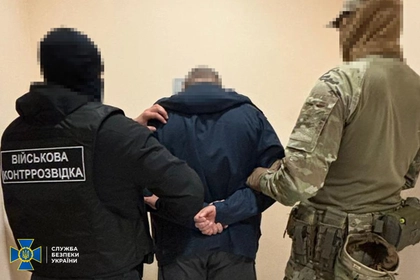As light rain falls from a gloomy sky, in a fallow farm field that doubles as a shooting range, the two elite snipers rendezvous with their supplier supporters.
They had earlier left their frontline post where they recently contributed to a major battlefield success and drove in a battered SUV to hold the meeting.
JOIN US ON TELEGRAM
Follow our coverage of the war on the @Kyivpost_official.
The topic is ammunition. Through trial and error in live fire situations, the snipers, who cannot be named and whose unit must remain secret, had determined that the ammo they had been using was not completely fit for their purpose.
“We were receiving all sorts of different makes from all sorts of different manufacturers in different countries,” Oleksandr (not his real name) said. “It’s all well intended, but we found that even small variations could make our work inconsistent and that is not acceptable in combat.”
He added: “A difference of a few centimeters over hundreds of meters is the difference between a dead enemy and a miss. We have to minimize the difference.”
Deliberate and careful are aspects to be expected from military snipers, but warm and open are perhaps more surprising. Between puffs on cigarettes, the ubiquitous signature product of war, they answer every question with patience, good will and friendliness.

SBU Reports Capturing Ukrainian Officer Leaking Special Ops Plans to Moscow
It becomes clear that the snipers, both in their mid-40s, are not only good at their craft, but proud to share about it.
“There are many considerations to being a successful sniper. A key one is establishing an appropriate shooting position,” Oleksandr says. “It’s not Hollywood where some hero just wanders around with a weapon and a scope. There’s lots of planning and lots of carrying – weapons, ammo boxes, food, water, personal equipment. The last thing one wants to think about is whether the ammo is good.”
To guarantee quality and consistency, the snipers and their unit’s suppliers developed a unique solution. They now manufacture their own ammunition cartridges – or “patrony” as they are called in Ukrainian. The suppliers get the raw materials to the sniper unit, such as bullet heads, shell casings, powder charges and primers, and the snipers manually assemble them to their specific standards.
The DIY idea came from both need and the snipers’ pre-war experience as sporting shooters, and it fulfils their requirements at another level too.
“Every army is about bureaucracy. When we manufacture our own like this, we avoid a lot of paperwork and pointless waiting times,” Oleksandr reveals and hints that his unit meets many of its own costs beyond their modest military salaries.
Manufacturing their own specialist ammo also lets them allot the standard issue ammo that they do receive to training exercises.
He explains that their sniper unit – generally a group of five - has strong operational autonomy.
“We go where we are needed. We come to an agreement with a commander about what sector he wants covered and then we’re left to do the work,” Oleksandr, who has been fighting since 2022, says.
His more reserved colleague, we’ll call him Oleh, takes out his mobile phone. He thumbs through his photos and videos and finds two clips to share.
The first is looking down the barrel of his weapon and through crosshairs at an enemy target. He and his team can hit targets up to two kilometers away. On the video clip, the target goes down.
The second clip is of Oleh himself, leaning over the parapet of a muddy, material-strewn trench. In the video, he laughs as a counter-sniper’s shot goes over his head. Job done, he takes a seat on a stump and lights another cigarette, as Oleksandr continues to explain.
“It’s constant tactical ping-pong. At the beginning in ’22, there were hardly any drones. Now, they are the biggest threat and we adjust to it,” he says.
Stefan Korshak, Kyiv Post’s military specialist, estimates that some 80 percent of current battlefield casualties are from armed drones.
The snipers explain to their suppliers the many nuances that they have learned about deadly drones and how to combat them.
“Different electronic warfare (EW) equipment works on different drone types in different ways,” Oleksandr says. “One ‘REB’ [Ukrainian acronym for EW unit] might knock a drone down at 100 meters, but another might not work until the drone is nearly on top of us, and then it can be too late.”
The difference in meters can be deadly, the snipers explain, because some of the explosive charges released by the drones can be heard and others cannot.
“With Soviet issue grenades, there’s three seconds between the click of the charging pin and the explosion,” Oleksander says.
His and Oleh’s unit had access to a high-quality REB, which cost around $5,000, but gave it away to a medical evacuation team that was being targeted by Russian FPV drone operators.
And, with that, a new goal is set with the unit’s supplier comrades: to obtain a new REB to cover the snipers.
If the snipers had enough time, they would probably build it themselves,.
You can also highlight the text and press Ctrl + Enter








